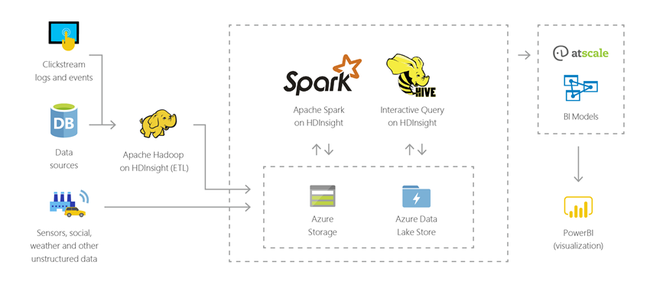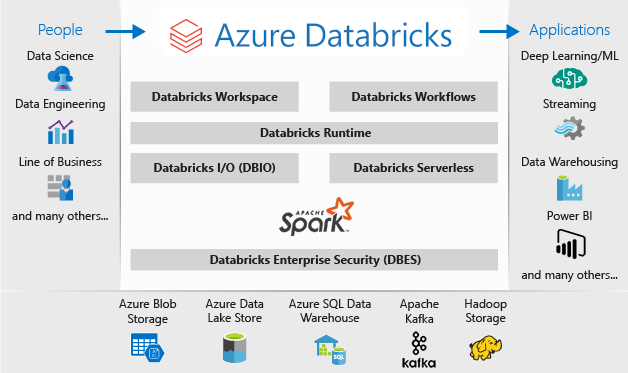What's happening to Machine Learning Server?
Important
The support for Microsoft Machine Learning Server 9.4.7 will end on July 1, 2022. For more information, see Support timeline for Microsoft R Server & Machine Learning Server.
This article explains options for replacing the functionality of Machine Learning Server and migration strategies for code and data to other platforms.
Machine Learning Server is enterprise software for data science, providing R and Python interpreters, base distributions of R and Python, additional libraries from Microsoft, and operationalization capability.
Cloud analytics options
Many workloads from Machine Learning Server can also be uploaded to the Azure platform. Data born in the cloud (originated in cloud-based applications) are prime candidates for these technologies, and data movement services can migrate large-scale data securely and quickly. For more on data movement options, see Choose an Azure solution for data transfer.
Azure has systems and certifications allowing secure data and data processing in a variety of tools. More information on these certifications is located at the Microsoft Trust Center resource.
Azure Synapse Analytics
Azure Synapse Analytics is an enterprise analytics service that accelerates time to insight across data warehouses and big data systems, using distributed processing and data constructs. Azure Synapse Analytics brings together SQL technologies used in enterprise data warehousing, Spark technologies used for big data, pipelines for data integration and ETL/ELT, and deep integration with other Azure services such as Power BI, Azure Cosmos DB, and Azure Machine Learning.
Use Azure Synapse Analytics as a replacement for Machine Learning Server when you need to:
- Leverage both serverless and dedicated resource models. For predictable performance and cost, create dedicated SQL pools to reserve processing power for data stored in SQL tables.
- Process unplanned or burst workloads, access an always-available, serverless SQL endpoint.
- Use built-in streaming capabilities to land data from cloud data sources into SQL tables.
- Integrate AI with SQL by using machine learning models to score data using the T-SQL PREDICT function.
- Leverage ML models with SparkML algorithms and Azure Machine Learning integration for Apache Spark 2.4 supported for Linux Foundation Delta Lake.
- Use a simplified resource model that frees you from having to worry about managing clusters.
- Process data that requires fast Spark start-up and aggressive autoscaling.
- Process data using.NET for Spark allowing you to reuse your C# expertise and existing .NET code within a Spark application.
- Work with tables defined on files in the data lake are seamlessly consumed by either Spark or Hive.
- Use SQL with Spark to directly explore and analyze Parquet, CSV, TSV, and JSON files stored in a data lake.
- Enable fast, scalable data loading between SQL and Spark databases.
- Ingest data from 90+ data sources.
- Enable “Code-Free” ETL with Data flow activities.
- Orchestrate notebooks, Spark jobs, stored procedures, SQL scripts, and more.
- Monitor resources, usage, and users across SQL and Spark.
- Use Role-based access control to simplify access to analytics resources.
- Write SQL or Spark code and integrate with enterprise CI/CD processes.
The architecture of Azure Synapse Analytics is as follows:

For more information, see Machine Learning capabilities in Azure Synapse Analytics.
Azure SQL Managed Instance Machine Learning Services
Machine Learning Services in Azure SQL Managed Instance provides in-database machine learning, supporting both Python and R scripts. The feature includes Microsoft Python and R packages for high-performance predictive analytics and machine learning. The relational data can be used in scripts through stored procedures, T-SQL script containing Python or R statements, or Python or R code containing T-SQL.
Use Azure SQL Managed Instance Machine Learning Services as a replacement for Machine Learning Server when you need to:
- Run R and Python scripts to do data preparation and general purpose data processing.
- Train machine learning models in database.
- Deploy your models and scripts into production in stored procedures.
For more information, see Machine Learning Services in Azure SQL Managed Instance.
Azure Machine Learning
Azure Machine Learning is a cloud-based service that can be used for any kind of machine learning, from classical machine learning to deep learning, supervised, and unsupervised learning. Whether you prefer to write Python or R code with the SDK or work with no-code/low-code options in the studio, you can build, train, and track machine learning and deep-learning models in an Azure Machine Learning Workspace. With Azure Machine Learning you can start training on your local machine and then scale out to the cloud. The service also interoperates with popular deep learning and reinforcement open-source tools such as PyTorch, TensorFlow, scikit-learn, and Ray RLlib.
Use Azure Machine Learning as a replacement for Machine Learning Server when you need:
- A designer-based web environment for Machine Learning: drag-n-drop modules to build your experiments and then deploy pipelines in a low-code environment.
- Jupyter notebooks: use our example notebooks or create your own notebooks to leverage our SDK for Python samples for your machine learning.
- R scripts or notebooks in which you use the SDK for R to write your own code or use the R modules in the designer.
- The “Many Models Solution Accelerator” which builds on Azure Machine Learning and enables you to train, operate, and manage hundreds or even thousands of machine learning models.
- Machine learning extensions for Visual Studio Code (preview) provides you with a full-featured development environment for building and managing your machine learning projects.
- A Machine learning Command-Line Interface (CLI), Azure Machine Learning includes an Azure CLI extension that provides commands for managing with Azure Machine Learning resources from the command line.
- Integration with open-source frameworks such as PyTorch, TensorFlow, and scikit-learn and many more for training, deploying, and managing the end-to-end machine learning process.
- Reinforcement learning with Ray RLlib.
- MLflow to track metrics and deploy models or Kubeflow to build end-to-end workflow pipelines.
The architecture of an Azure Machine Learning deployment is as follows:
For more information, see What is Azure Machine Learning?
Other cloud analytics options
Other options include Azure HDInsight, Azure Databricks, and Azure Cosmos DB.
Azure HDInsight
Azure HDInsight is a cloud distribution of Hadoop components. Azure HDInsight is a managed, full-spectrum, open-source analytics service in the cloud for enterprises. HDInsight allows you to use open-source frameworks such as Hadoop, Apache Spark, Apache Hive, LLAP, Apache Kafka, Apache Storm, R, and more.
HDInsight includes specific cluster types and cluster customization capabilities, such as the capability to add components, utilities, and languages. For more information, see Cluster types in HDInsight.
The architecture of an Azure HDInsight deployment is as follows:

For more information, see What is Azure HDInsight?.
Azure Databricks
Azure Databricks is a data analytics platform optimized for the Azure cloud services platform. Azure Databricks offers two environments for developing data intensive applications: Azure Databricks SQL Analytics and Azure Databricks Workspace.
Azure Databricks SQL Analytics provides an easy-to-use platform for analysts who want to run SQL queries on their data lake, create multiple visualization types to explore query results from different perspectives, and build and share dashboards.
Azure Databricks Workspace provides an interactive workspace that enables collaboration between data engineers, data scientists, and machine learning engineers. For a big data pipeline, the data (raw or structured) is ingested into Azure through Azure Data Factory in batches, or streamed near real-time using Apache Kafka, Event Hub, or IoT Hub. This data lands in a data lake for long term persisted storage, in Azure Blob Storage or Azure Data Lake Storage. As part of your analytics workflow, use Azure Databricks to read data from multiple data sources and turn it into breakthrough insights using Spark.
The architecture of a Microsoft Azure Databricks deployment is as follows:

For more information, see What is Azure Databricks?
Azure Cosmos DB
Azure Cosmos DB is a fully managed NoSQL database for modern app development. Single-digit millisecond response times, and automatic and instant scalability, guarantee speed at any scale. Business continuity is assured with SLA-backed availability and enterprise-grade security. App development is faster and more productive thanks to turnkey multi region data distribution anywhere in the world, open-source APIs and SDKs for popular languages.
As a fully managed service, Azure Cosmos DB handles database administration with automatic management, updates and patching. It also handles capacity management with serverless and automatic scaling options that respond to application needs to match capacity with demand.
The architecture of an Azure Cosmos DB deployment is as follows:

For more information on using Notebooks with Python or C# in Azure Cosmos DB Deployments, see Built-in Jupyter Notebooks support in Azure Cosmos DB.
For more information, see the Azure Cosmos DB documentation.